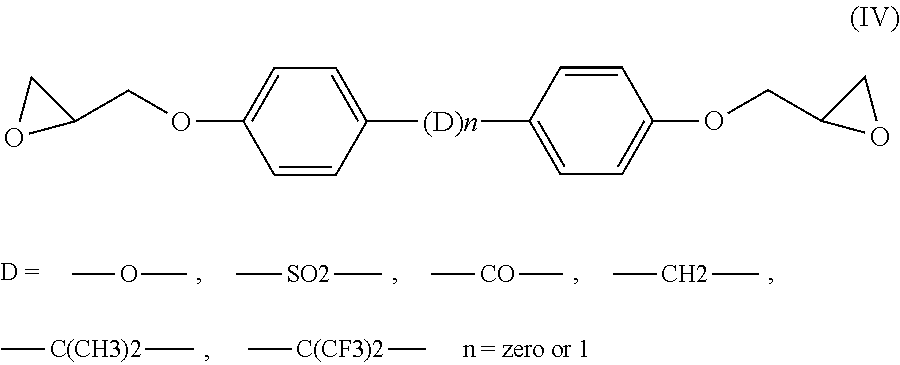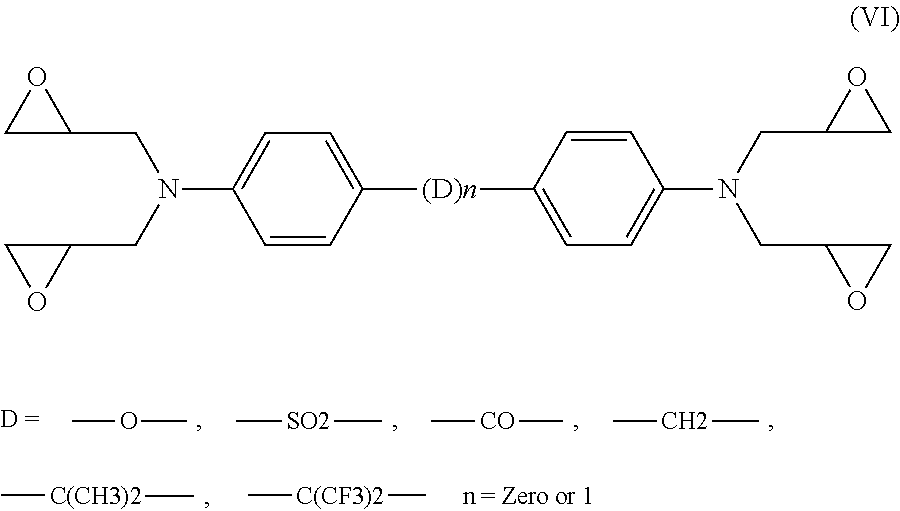Electrical insulation system
a technology of electric insulation and insulation system, which is applied in the field of electric insulation system, can solve the problems of reducing the thermal expansion coefficient, increasing the overall price of the insulation, and increasing the stiffness, and achieves the effect of excellent nanoparticle dispersion and simple mixing method
- Summary
- Abstract
- Description
- Claims
- Application Information
AI Technical Summary
Benefits of technology
Problems solved by technology
Method used
Image
Examples
example 1
[0084]The preparation is made analogous to the sample preparation of Reference 1, with the difference that Nanopox E470 is added in Step 2 together with the other components EPH 845 and EPR 845 and all the components are mixed together in a mixing apparatus under a vacuum of 0.1 bar and at a temperature of 90° C. for five minutes.
example 2
[0085]The preparation is made analogous to the sample preparation of Reference 2, with the difference that Nanopox E470 is added in Step 2 together with the other components EPH 845 and EPR 845 and the mixture is mixed for further 10 minutes after the addition has been completed.
TABLE 2(Properties of unfilled and microsilica filled epoxy with and without theaddition of Nanopox)Example 2Reference 2Epoxy +Example 1Epoxy +Nanopox +Ref. 1Epoxy +microsilicamicrosilicaTestPropertiesEpoxyNanopoxW12W12DSCTg (° C.)77797483TensileE (MPa)3260339599939571Strengthstd dev.12867352268σb (MPa)63718489std dev.4631εb %)2.32.81.41.6std dev.0.30.80.20FractureGlc (kJ / m2)304412557528std dev.28723555Tg (° C.): glass-transission temperature in ° C.E (MPa): Young's modulus in MPastd dev.: Standard deviationσb (MPa): Tensile strength in MPaεb %): Elongation at break in % (percent)Glc (kJ / m2): Critical energy release rate in kJ / m2
example 3
[0086]Analogous results are obtained when the nano-scale sized silica as used in Examples 1 and 2 is replaced by a nano-scale sized zinc oxide dispersion as described in U.S. Pat. No. 6,699,316; a nano-scale sized alpha-alumina powder as described in U.S. Pat. No. 7,638,105; or a nano-scale sized layered silicate as described in Chem. Materials, 1991, 3(5), pages 772-775.
Discussion
[0087]In the case of pure epoxy (Reference 1 / Example 1), one can see that the addition of Nanopox has several beneficial and simultaneous effects on the resulting properties: increase of Tg, increase of tensile strength and critical energy release rate. In other cases, increase of Tg can have a negative effect on critical energy release rate. Therefore, these results are surprising.
[0088]The amount of EPH 845 in Example 1 (compared to Reference 1) was adjusted because in Example 1 Nanopox is added as a masterbatch constituted of silica nanoparticle dissolved in DGEBA resin. In order to maintain the same st...
PUM
| Property | Measurement | Unit |
|---|---|---|
| Percent by mass | aaaaa | aaaaa |
| Fraction | aaaaa | aaaaa |
| Weight | aaaaa | aaaaa |
Abstract
Description
Claims
Application Information
 Login to View More
Login to View More - R&D
- Intellectual Property
- Life Sciences
- Materials
- Tech Scout
- Unparalleled Data Quality
- Higher Quality Content
- 60% Fewer Hallucinations
Browse by: Latest US Patents, China's latest patents, Technical Efficacy Thesaurus, Application Domain, Technology Topic, Popular Technical Reports.
© 2025 PatSnap. All rights reserved.Legal|Privacy policy|Modern Slavery Act Transparency Statement|Sitemap|About US| Contact US: help@patsnap.com



